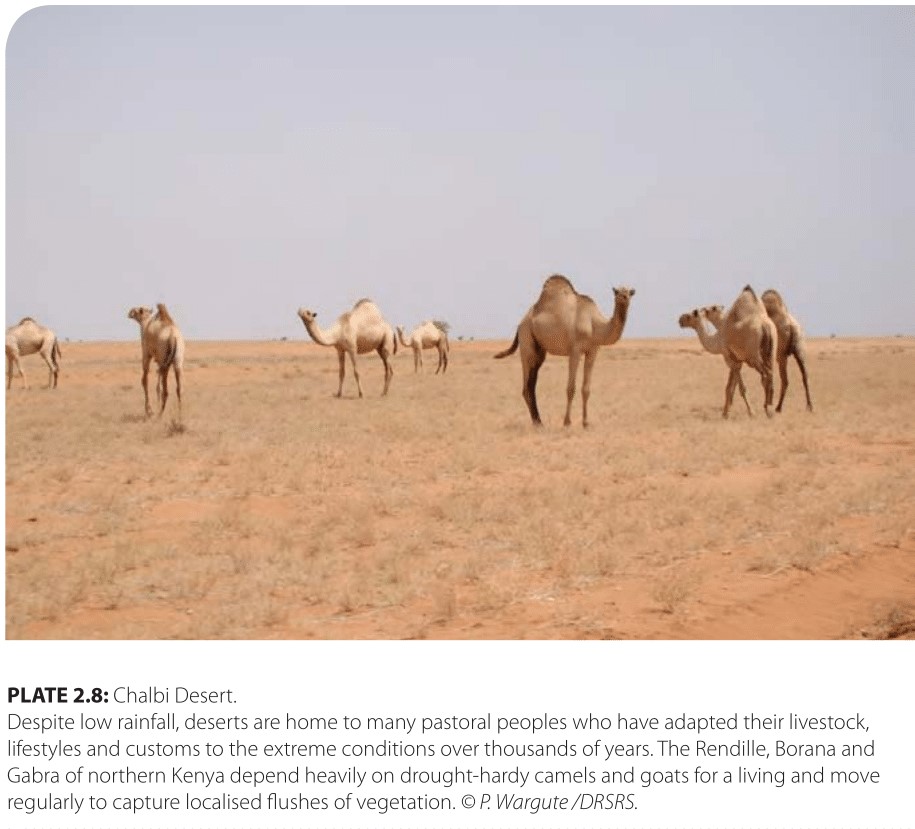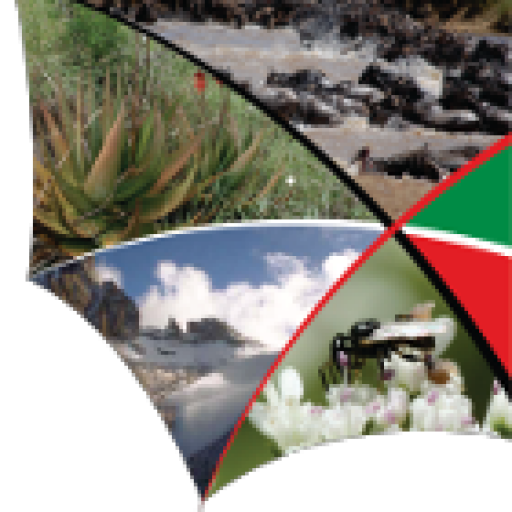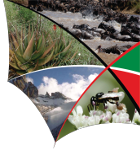Deserts
Deserts are highly water-stressed environments where rainfall is sparse and plant growth limited to small grasses, herbs and shrubs that respond quickly to scattered and infrequent rain. Much of the desert is covered by weathered stone, known as jebbel, or by wind-blown sand dunes. Short, widely-scattered Acacias are the most characteristic vegetation feature of the deserts in northern Kenya. The Chalbi, the driest of Kenya’s deserts, is extensively covered by sand dunes. Desert ecosystems support a low diversity of plant and animal life, highly adapted to water and food deprivation, and high temperatures. Many species of small animals, including rodents and reptiles, evade the desert extremes by burrowing underground and becoming torpid. Large mammals, such as the oryx, gerenuk and gazelle, manage to survive without drinking by conserving water metabolically, feeding on the moistest plants and shading during the hottest periods. The impact of peoples on desert plants and animals has been the most important factor shaping deserts since the domestication of livestock tenthousand years ago. In northern Kenya plants and animals have been displaced, hunted down or depleted by camels, sheep and goats. Tree cover has been greatly reduced by a rising human population using ever more material for livestock shelters, fuelwood and, increasingly, a commercial charcoal industry. Heavy browsing and grazing by livestock has depleted groundcover and increased erosion. As a result, livestock herds have fallen and poverty has increased among pastoral societies of northern Kenya in the last three decades.

Importance of Deserts
Deserts cover less than two per cent of Kenya’s land surface and are the least productive ecosystem. Though relatively minor in the league of ecosystem services, deserts are important in supporting a unique array of specialized plants and animals adapted to extreme heat and drought. Windblown desert sands are transported on a global scale and increase the productivity of distant lands, lakes and oceans. Deserts are important homelands to pastoralists, especially camel cultures. Deserts have long been important sources of salt and minerals. The value of deserts is likely to rise as Kenya moves towards a green economy based on renewable energy sources such as the sun and wind, both of which are intense in deserts.

